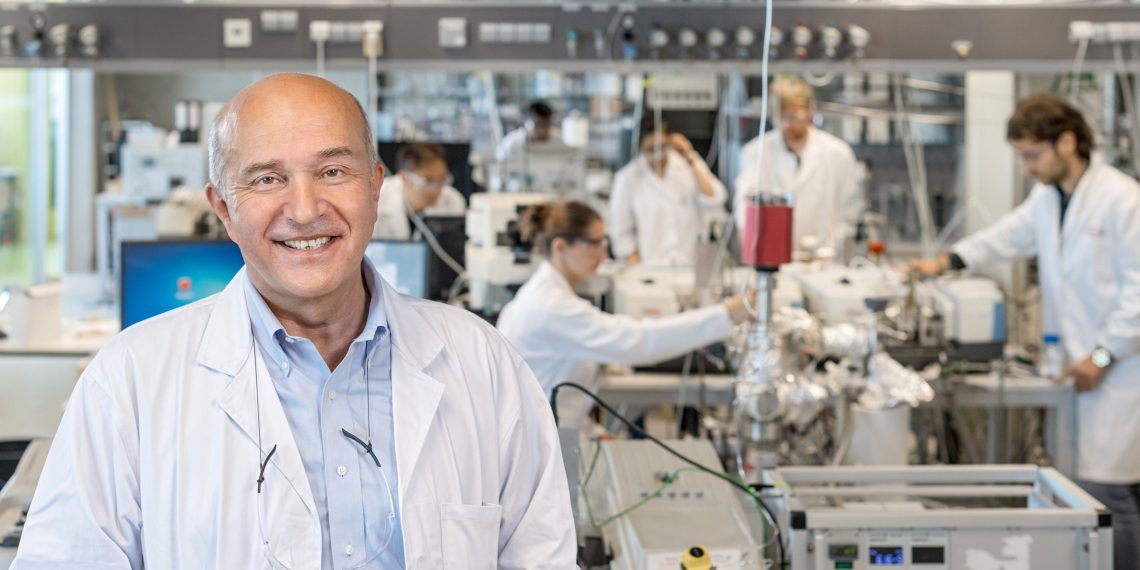Ten grams of the porous materials zeolites can have an internal surface area the size of a soccer field. Their cavities can be used to catalyze chemical reactions and thus save energy. An international research team has now gained new insights into the role of water molecules in these processes. One important application is the conversion of biomass into biofuel.
Although fuel from biomass is considered climate-neutral, it still requires energy to produce: Only higher temperatures and pressure ensure that the desired chemical reactions take place.
“If we want to do without fossil fuels in the future and use biomass efficiently on a large scale, then we also need to find ways to reduce the energy required for processing.”
-Johannes Lercher, Professor of Technical Chemistry at the Technical University of Munich (TUM)
Together with an international research team, the chemist has now taken a closer look at the role of water molecules in reactions within the pores in zeolites, which are only a few nanometers in size.
What’s acidic about acid
An acid is characterized by the fact that it readily releases protons. Hydrochloric acid thus splits into a negatively charged chloride anion, as also occurs in table salt crystals, and a positively charged proton, which docks onto water molecules in water. This creates a positively charged hydronium ion, which, however, is also happy to pass this proton on again, for example to an organic molecule.
If a proton is “forced” onto the organic molecule, it tries to stabilize itself. An alcohol can thus become a molecule with a double bond — a typical reaction step on the way from biomass to biofuel. The walls of zeolites stabilize the transition states that occur during the conversion, helping to minimize the energy required for the reaction.
A zeolite becomes acidic
In zeolites, there are oxygen atoms in the crystal structure that already possess a proton. In interaction with water molecules, they form hydronium ions, just like molecular acids. However, while they disperse in water, they are firmly bound in the zeolite. By chemical pretreatment, it is possible to vary the number of these active sites and thus produce a certain density of hydronium ions in the pores of the zeolite.
The optimal zeolite for each reaction
The research team now systematically varied the size of the voids, the density of the active sites and the amount of water. This allowed them to show which void size and which amount of water best catalyzed selected example reactions.
“In principle, you can increase the reaction rate by making the pores narrower and increasing the charge density,” explains Johannes Lercher. “However, there are limits to this increase: If it gets too narrow and the charges are too close together, the reaction rate decreases again. For each reaction, you can thus find the optimal conditions.” “Zeolites are suitable for all chemical reactions whose reactants fit into these pores and in which an acid is used as a catalyst,” Lercher emphasizes. “We are at the very beginning of a development here that has the potential to significantly increase the reactivity of molecules even at low temperatures and thus save energy to a considerable extent in the production of fuels or chemical substances.”

















